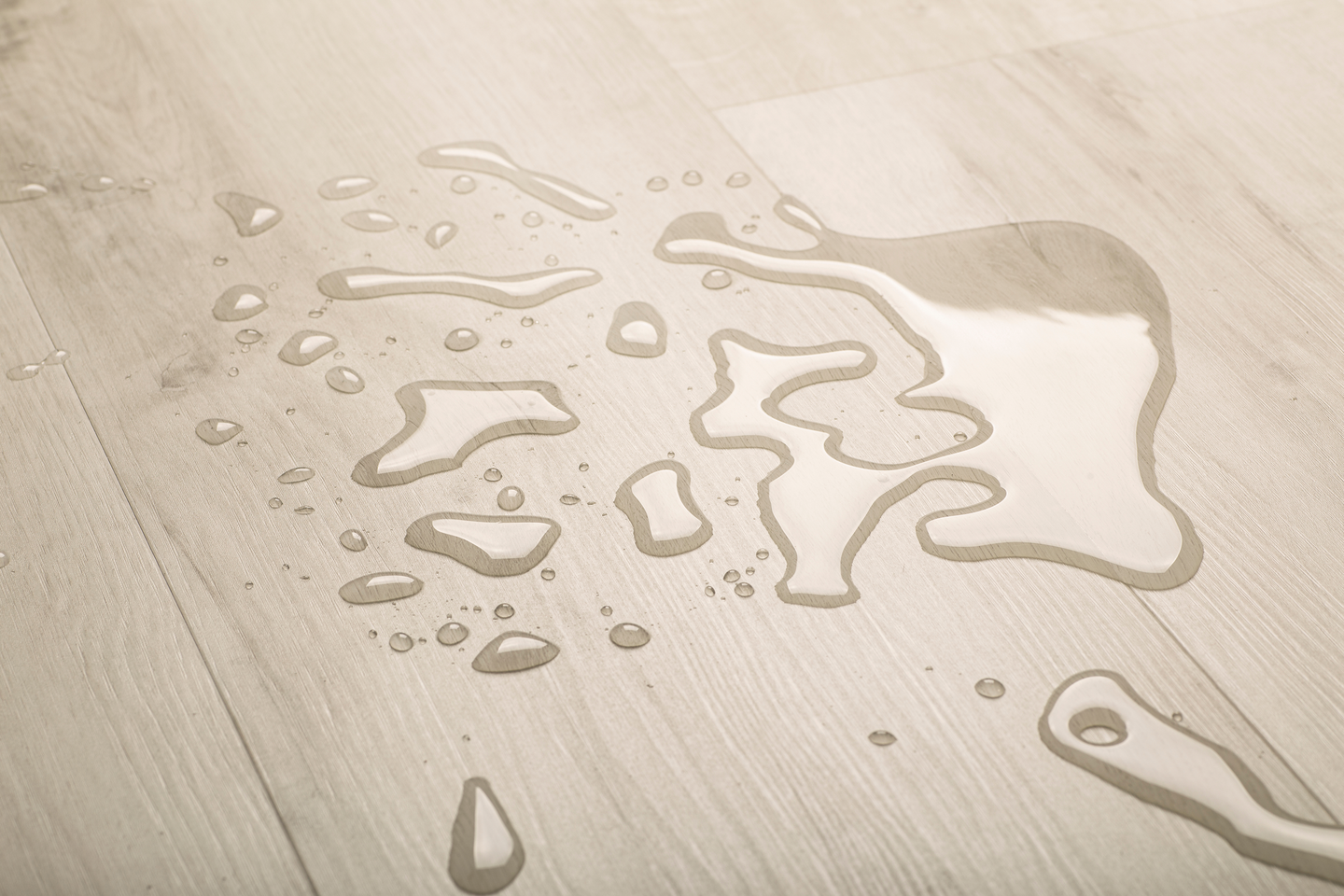Common Causes of Water on the Bathroom Floor: Water On Bathroom Floor

Water pooling on the bathroom floor is a common household problem that can be caused by a variety of factors. Identifying the source of the leak is crucial for addressing the issue effectively and preventing further damage.
Leaky Faucets
Leaky faucets are one of the most common causes of water on the bathroom floor. Over time, the seals and washers inside the faucet can wear down, allowing water to drip continuously. This constant dripping can lead to water accumulation on the floor, especially if the leak goes unnoticed for a prolonged period.
- Identifying a Leaky Faucet: Listen for dripping sounds, especially when the faucet is turned off. Check for water stains or dampness around the base of the faucet.
- Addressing a Leaky Faucet: Repairing a leaky faucet usually involves replacing the worn-out seals or washers. In some cases, the entire faucet may need to be replaced.
Leaky Showerheads
Similar to leaky faucets, leaky showerheads can also cause water to pool on the bathroom floor. The showerhead’s internal components, such as the spray nozzles and seals, can deteriorate over time, leading to leaks.
- Identifying a Leaky Showerhead: Listen for dripping sounds when the shower is not in use. Look for water stains or dampness around the showerhead and the surrounding area.
- Addressing a Leaky Showerhead: Repairing a leaky showerhead often involves cleaning or replacing the spray nozzles and seals. If the showerhead is beyond repair, it may need to be replaced entirely.
Leaky Pipes
Leaking pipes are another common cause of water on the bathroom floor. Pipes can leak due to corrosion, cracks, or loose fittings. Leaking pipes can be difficult to detect, as the water may not always be visible.
- Identifying Leaky Pipes: Listen for dripping or gurgling sounds in the walls or behind the fixtures. Check for water stains or dampness on the walls or ceiling. Inspect the pipes for any visible signs of corrosion or damage.
- Addressing Leaky Pipes: Repairing leaking pipes requires professional plumbing services. The plumber will need to identify the source of the leak and make the necessary repairs, which may involve replacing sections of the pipe or tightening loose fittings.
Clogged Drains
Clogged drains can also lead to water pooling on the bathroom floor. Hair, soap scum, and other debris can accumulate in the drain, blocking the flow of water and causing it to back up.
- Identifying a Clogged Drain: Look for slow draining water in the sink, bathtub, or shower. Check for any signs of water backing up in the drain.
- Addressing a Clogged Drain: You can attempt to clear a clogged drain using a plunger or a drain snake. If these methods are unsuccessful, you may need to call a plumber to clear the blockage.
Troubleshooting and Repairing Water Leaks

Water leaks in the bathroom can be a source of frustration and potential damage. Identifying the source of the leak and addressing it promptly is crucial to prevent further issues. This section will guide you through troubleshooting common water leaks in the bathroom and provide practical solutions for repairing them.
Leaky Faucets
Leaky faucets are a common occurrence in bathrooms. They can be caused by worn-out washers, loose connections, or corrosion.
- Inspect the Faucet: Begin by examining the faucet for any visible signs of wear or damage, such as a loose handle or a cracked spout.
- Replace the Washer: If the leak originates from the faucet spout, it is likely due to a worn-out washer. Turn off the water supply to the faucet and carefully remove the faucet handle. The washer is located beneath the handle, and you can replace it with a new one of the appropriate size.
- Tighten Connections: If the leak is coming from the base of the faucet, it could be due to loose connections. Use a wrench to tighten the connections, ensuring they are secure but not overtightened.
Leaky Showerheads
Leaky showerheads are often caused by mineral deposits buildup or worn-out O-rings.
- Clean the Showerhead: Remove the showerhead and soak it in vinegar for a few hours to dissolve mineral deposits. If the showerhead is heavily clogged, you may need to use a small brush to clean it.
- Replace the O-rings: If the leak persists, the O-rings may be worn out. You can replace them with new ones of the appropriate size.
Leaky Pipes
Leaky pipes can occur due to corrosion, cracks, or loose connections.
- Identify the Leak: Determine the location of the leak. This may involve listening for dripping sounds or visually inspecting the pipes for signs of moisture.
- Repair Minor Leaks: For small leaks, you can apply a sealant or pipe wrap to the affected area.
- Replace Damaged Pipes: For significant leaks or damage, you may need to replace the affected section of pipe. This may require the assistance of a plumber.
Unclogging Drains
Clogged drains in the bathroom can be caused by hair, soap scum, and other debris.
- Use a Plunger: A plunger is an effective tool for unclogging drains. Create a seal around the drain opening and plunge up and down vigorously.
- Use a Drain Snake: If the plunger is ineffective, a drain snake can be used to remove stubborn clogs. Insert the drain snake into the drain and rotate it to break up the clog.
- Chemical Drain Cleaners: Chemical drain cleaners can be used to dissolve clogs, but they should be used with caution. Follow the manufacturer’s instructions carefully and ensure proper ventilation.
Preventing Future Water Damage

Preventing water damage in your bathroom requires a proactive approach, combining regular maintenance with thoughtful choices in materials and fixtures. By taking these steps, you can minimize the risk of costly repairs and ensure the longevity of your bathroom.
Regular Maintenance, Water on bathroom floor
Regular maintenance is crucial for preventing water damage. By performing these tasks routinely, you can catch small problems before they escalate into major issues.
- Inspect faucets and showerheads for leaks: Check for dripping or leaking faucets and showerheads, as these can lead to water damage over time. Tighten loose handles and replace worn-out washers to prevent leaks.
- Check for signs of water damage: Regularly inspect walls, floors, and ceilings for signs of water damage, such as discoloration, mold, or mildew. Address any issues promptly to prevent further damage.
- Clean drainpipes and vents: Regularly clean drainpipes and vents to prevent clogs and ensure proper drainage. Clogged drains can lead to backups and water damage.
- Test the toilet for leaks: Place a few drops of food coloring in the toilet tank and wait 30 minutes. If the coloring appears in the bowl, there is a leak in the tank that needs to be repaired.
- Check for leaks around the tub or shower: Inspect the caulking around the tub or shower for cracks or gaps. Reapply caulk as needed to prevent water from seeping into the walls.
Choosing High-Quality Materials and Fixtures
Using high-quality materials and fixtures can significantly reduce the risk of water damage.
- Invest in durable plumbing fixtures: Opt for durable and reliable plumbing fixtures, such as faucets, showerheads, and toilets, made from high-quality materials. These fixtures are less likely to leak or malfunction.
- Choose water-resistant materials: Select water-resistant materials for walls, floors, and ceilings. Ceramic tiles, waterproof paint, and moisture-resistant drywall are good options.
- Ensure proper installation: Proper installation of plumbing fixtures and materials is essential to prevent leaks and water damage. Hire a licensed plumber or contractor to ensure all work is done correctly.
- Use quality sealing materials: Apply high-quality sealant around tubs, showers, and sinks to prevent water from seeping into the walls. Regularly inspect and reapply sealant as needed.
Scheduling Regular Inspections
Regular inspections by a qualified professional can help identify potential problems before they become major issues.
- Schedule annual plumbing inspections: Have a licensed plumber inspect your plumbing system annually to check for leaks, corrosion, and other potential problems.
- Inspect the water heater: Regularly check the water heater for leaks and ensure it is functioning properly. A leaking water heater can cause significant water damage.
Water Leak Detection Systems
Investing in a water leak detection system can provide peace of mind and minimize potential damage.
- Smart water leak detectors: These devices monitor water usage and alert you to leaks, even when you’re away from home.
- Water shut-off valves: Install automatic water shut-off valves that automatically shut off the water supply in case of a leak.
